Papers by Beatrice Leal
Illuminating Metalwork: Metal, Object, and Image in Medieval Manuscripts, ed. Joseph Salvatore Ackley and Shannon L. Wearing (Berlin/Boston: Walter de Gruyter GmbH), pp. 119-222, 2022
La pittura parietale aniconica e decorativa fra tarda antichità e alto medioevo, 2022
in La pittura parietale aniconica e decorativa fra tarda antichità e alto medioevo, ed. F. Marazz... more in La pittura parietale aniconica e decorativa fra tarda antichità e alto medioevo, ed. F. Marazzi & M. Cuomo. Isernia: Volturnia Edizioni, 2022, pp. 373–88.

Muqarnas, 2020
Glass wall mosaic is a major feature of early Islamic architecture, surviving above all in the Um... more Glass wall mosaic is a major feature of early Islamic architecture, surviving above all in the Umayyad monuments of the Dome of the Rock and the Great Mosque of Damascus. These grand mosaics inspired periodic revivals from the eleventh century onwards. The centuries between the Umayyad commissions and the first of the documented revivals, however, have been seen as a period of decline for the craft; the Abbasid dynasty that defeated the Umayyads in 750 has not traditionally been associated with the medium. This article reexamines the question, looking at textual and material evidence for Abbasid mosaic production. It argues that, in fact, there was a continuous mosaic tradition well into the ninth century, under the patronage of both caliphs and lower-ranking officials. The first part of the article considers written evidence for mosaics in Mecca and Medina. The second part looks in detail at a surviving example that, it will be argued, dates to the Abbasid period, on the Bayt al-Mal (Treasury) of the Great Mosque of Damascus. The concluding section discusses factors behind the general decline in mosaic production in the tenth century and the possibility of pockets of continuity.

Gesta, 2018
The mosaic map of Madaba, Jordan, has been attracting visitors and puzzling art historians since ... more The mosaic map of Madaba, Jordan, has been attracting visitors and puzzling art historians since it was uncovered in the 1890s. The largest extant fragment of the map encompasses modern Jordan, Israel, Palestine, Lebanon, and parts of Egypt. It depicts rivers, mountains and deserts, villages and cities, and has more than 150 inscriptions that describe them. Previous analyses of the mosaic have been based on two assumptions: that it was designed for an early Byzantine church and that this supposed church was roughly similar in form to the nineteenth-century church that now houses the mosaic. On the basis of this presumed ecclesiastical context, the map has been interpreted either as a pilgrimage guide or as a unique expression of a Christian worldview, displaying all the sacred sites of the Holy Land with Jerusalem at the center. The mosaic does not fit well into a church setting, however, either physically or in terms of its content. It contains little overtly Christian imagery, and it does not resemble other Jordanian church floors in its composition, layout, choice of motifs, or use of inscriptions. In addition, it appears to have been designed for a hall with a north–south axis, not an east–west one. After laying out the case against an original church context, I argue that the map was instead designed for a secular hall, most likely one used for legal hearings, and then discuss some new ways of interpreting the architectural motifs on the map in light of this reading.

Encounters, Excavations and Argosies: Essays for Richard Hodges, 2017
Since its re-discovery in the 1930s, the early Islamic settlement of ʿAnjar in the Beqaaʿ Valley ... more Since its re-discovery in the 1930s, the early Islamic settlement of ʿAnjar in the Beqaaʿ Valley in Lebanon has resisted easy definition. Despite having elements in common with contemporary urban sites and with elite rural residences – the ‘desert palaces’ – it does not neatly fit into either category. Interpreted as a very small city or a very large palace, the site does not work. This may, however, say more about our own categorisations than it does about the settlement itself. Working on the assumption that the apparent inconsistencies were not due to bad planning on the part of patrons or builders, this paper discusses the original function of the 8th-century settlement, and its development over the following centuries. The main section of the paper focuses on the foundation and early use of ʿAnjar under the Umayyad caliph al-Walid ibn Abd al-Malik (705-715). All the secondary literature on the site so far has similarly emphasised the Umayyad phase of its history, and the reconstructions carried out in the 1950-60s did more than just emphasise – they physically destroyed many of the structures belonging to later phases. However, it is not my aim to give special privilege to the ‘original’, and the final section of the paper covers ʿAnjar’s development in its post-Umayyad phases. Specifically, I will look at the way in which a specialised and centrally-planned elite site was transformed into what appears to have been a fully-functioning and socially diverse town.

Holy Water in the Hierotopy and Iconography of the Christian World, 2017
This paper looks at the depiction and display of water at the early Islamic site of Qusayr Amra, ... more This paper looks at the depiction and display of water at the early Islamic site of Qusayr Amra, in modern Jordan. The bathhouse was built during the 720s under the patronage of the Umayyad prince al-Walid ibn Yazid, later Caliph al-Walid II (743-744), and consists of a triple-aisled audience hall with a three-room bathing suite attached, of apodyterium, tepidarium and calidarium. The walls and vaults of both the audience hall and the bathhouse proper are covered with paintings, with subjects including music-making, lovemaking, hunting, fighting, dancing and bathing, images of the patron and other rulers, mythological and Quranic characters, and a range of female personifications. As a bathhouse in a semi-arid area of the Jordanian steppe, the building is itself a display of water, embodying and exemplifying the control of this resource by the Umayyad elite. Beyond this, the details of the representations suggest that engagement with water held a range of more complex symbolic associations for the original viewers. In particular, the images present water as a regenerative element in a spiritual as well as a physical sense. Despite the secular function of the building, a transcendental current runs through the painted cycle. Without explicitly casting the space as sacred, the paintings present the waters of the bathhouse as transformative.
The engagement of early Islamic art with the earlier traditions of their newly-conquered empire, in particular with Greco-Roman and Sassanian motifs, has often been noted. However, the extent to which Umayyad artists and patrons engaged with Christian themes is less studied. The paper considers the influence of Christian imagery on the paintings of Jonah and of the Nile at Qusayr Amra, and the significance of the adaptation of these motifs in a secular Islamic building, with reference to concepts such as the Rivers of Paradise, baptism and the Water of Life. Finally, the images of bathing at Qusayr Amra are discussed. The paintings of bathers in the bathhouse appear to contain Dionysiac references, again presenting water, and the act of bathing, as transformative. In the audience hall, the central image in the west aisle is a semi-naked woman standing by a pool of water. She has previously been interpreted as a portrait of a specific woman associated with al-Walid’s court, or as a generic pin-up. However, the ways in which both women and water are represented elsewhere in the paintings at Qusayr Amra support a re-investigation of this lady, on the assumption that she is more ideal than real, with the status of a goddess or a personification. The paper concludes with an assessment of the role of bathing in late Umayyad courtly ceremonial, and the presentation of water as a feminised and semi-mythological zone, with the potential to transport the bather far beyond the everyday world.
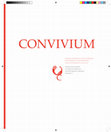
Thanks to new material analysis and archaeological investigation, still in progress, the rural ch... more Thanks to new material analysis and archaeological investigation, still in progress, the rural church of S. Ambrogio alla Rienna in the countryside of Salerno (southern Italy) is revealing crucial information about cultural coexistence between Lombards and Franks. Its mid-ninth century mural paintings, whose quality is outstanding in the early medieval period, can be used as to highlight political and theological disputes, as well as ethnic identities, and economic and social dynamics of their period. In the eighth–ninth centuries the area was part of the Duchy then Principality of Benevento and Salerno. The church was at the centre of a network of landholdings belonging to the powerful monastery of S. Vincenzo al Volturno. What remains of the original painted programme suggests a wealthy patronage in close connection on the one hand with the culture of the Lombard courts and main monasteries, on the other with Carolingian politics in northern Lombardy.
Sodalitas: Studi in memoria di Faustino Avagliano, 2016
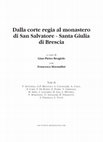
Dalla corte regia al monastero di San Salvatore - Santa Giulia di Brescia, ed. Gian Pietro Brogiolo & Francesca Morandini, 2014
the decorative plasterwork which covered the
arches of San Salvatore must originally have been
on... more the decorative plasterwork which covered the
arches of San Salvatore must originally have been
one of the most striking features of the church, and
what remains today is still impressive. this chapter
will principally consider two questions. Firstly,
these decorations have parallels to stucco-work
found elsewhere, not only in Western Europe,
mainly in northern italy and southern Switzerland,
but also in the islamic eastern Mediterranean; how
meaningful are these comparisons and how can
they be explained? Secondly – the opposite problem
– why are there not more comparable European
examples? Elaborate schemes of stuccowork
do not seem to have been so common that we can
assume them to have been part of the ‘normal’ apparatus
of church embellishment of this period in
western Europe. in which case, when the medium
was used did it carry some special significance, and
what might this have been?
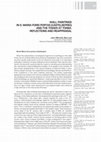
Castelseprio e Torba: sintesi delle ricerche e aggiornamenti, 2013
When the extraordinary mariological programme of paintings on the walls of the church of Santa Ma... more When the extraordinary mariological programme of paintings on the walls of the church of Santa Maria foris portas at Castelseprio was first uncovered, and then quickly made known to the art historical community in an exemplary publication, historians of early medieval art were transfixed. here was the missing link, the key which would provide the means to unlocking and understanding the role that the classical Byzantine tradition of art played in the evolution of elite artistic developments in the various theatres of state formation in post-Roman western Europe, from papal Rome to Carolingian Aachen and Northumbrian Lindisfarne, in the early medieval centuries. The artists responsible appeared to be masters of an almost undiluted tradition of Greco-Roman painting, testifying to the enduring existence of a strain of what has been designated by Ernst Kitzinger as 'perennial hellenism', continuing unbroken in one or more centres in the eastern Mediterranean and potentially available to artists in western Europe, minded to recover some of the elements of ancient classical practice in an age in which overt classical form and subject-matter were valued at a high premium in the rival courts of Europe. 1 Paradoxically, after brilliantly illuminating the sky for historians of early medieval art for a decade or so, the star of Castelseprio started to wane. Capitani d'Arzago, in the initial publication, had assigned the paintings to the mid 7 th century, 2 Weitzmann a few years later, argued cogently for early in the 10 th century, 3 while Schapiro and Kitzinger opted for an intermediate stage in the development of early medieval art, sometime around 800. 4 The iconographic and stylistic indices could not be resolved. Carbon-14 dates of 865AD+/-87 years, from a roof-beam respected by and apparently sealed by the plaster intonaco carrying the painted decoration in the eastern apse, 5 thermoluminescence dates in the 9 th century, with a median date of 828, for roof-tiles associated with the building, 6 and a date of 787+/-65 years for ceramic fragments from the make-up of the original pavement, 7 prompted Bertelli to argue for a date in the mid-9 th century and to propose as founding patron of the church, john, Count of Seprio and Milan, a major protagonist in the region. 8 Subsequently a date in the middle years of the 9 th century has found some general acceptance. 9 however, perceived similarities between the paintings at Castelseprio and 7 th -and early 8 th -century phases of painted imagery at Santa Maria Antiqua, in Rome, have continued to lead others to argue for an earlier date. 10
CV by Beatrice Leal
PhD dissertation abstract by Beatrice Leal
The built environment shapes our understanding of the world. Most of our lives -including making ... more The built environment shapes our understanding of the world. Most of our lives -including making and experiencing images -take place in or around buildings; social relations are expressed, maintained and challenged through the creation and control of structures and spaces; and most belief systems locate or celebrate the sacred in some kind of architectural setting. Artists of many cultures have shown a preference for architectural motifs, from Gothic and Gandharan micro-architectural sculptures, to the architectonic compositions of Italian Renaissance paintings and Iranian miniatures. In my dissertation I approach the topic through the art of late antiquity, around the Mediterranean basin, in the late Roman Empire and its successor states.
Conference programme by Beatrice Leal
Repair: A Method for the 21st Century?
Free online conference hosted by the Department of Art Hi... more Repair: A Method for the 21st Century?
Free online conference hosted by the Department of Art History and World Art Studies UEA, 27-28 May 2021. Keynote speaker is Professor Ana María Reyes (Boston University): 'To Weave and Repair: On Symbolic Reparations and Institution-Building'.
To register, please email ama.schooloffice@uea.ac.uk
Encyclopedia entry by Beatrice Leal
Encyclopedia of the Bible and Its Reception, 2020
2020. ‘Medieval Epoch II. Visual Arts,’ in Encyclopedia of the Bible and Its Reception, vol. 18, ... more 2020. ‘Medieval Epoch II. Visual Arts,’ in Encyclopedia of the Bible and Its Reception, vol. 18, ed. Constance M. Furey et al. Berlin and Boston: De Gruyter, cols. 384-92.
Conference Presentations by Beatrice Leal
by Federico Marazzi, Line VanWersch, Magali Souris, Fabio Scirea, Giovanna Ferri, Matteo Braconi, Marianna Cuomo, Flavia Vanni, Nicoletta Usai, Alberto Virdis, Serena Strafella, and Beatrice Leal
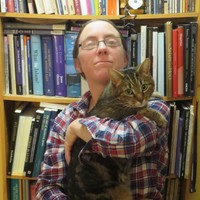


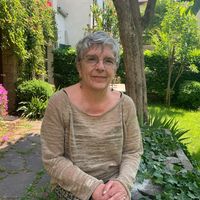




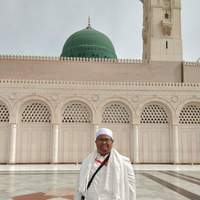
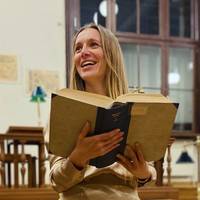
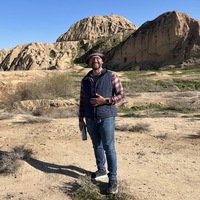
Uploads
Papers by Beatrice Leal
The engagement of early Islamic art with the earlier traditions of their newly-conquered empire, in particular with Greco-Roman and Sassanian motifs, has often been noted. However, the extent to which Umayyad artists and patrons engaged with Christian themes is less studied. The paper considers the influence of Christian imagery on the paintings of Jonah and of the Nile at Qusayr Amra, and the significance of the adaptation of these motifs in a secular Islamic building, with reference to concepts such as the Rivers of Paradise, baptism and the Water of Life. Finally, the images of bathing at Qusayr Amra are discussed. The paintings of bathers in the bathhouse appear to contain Dionysiac references, again presenting water, and the act of bathing, as transformative. In the audience hall, the central image in the west aisle is a semi-naked woman standing by a pool of water. She has previously been interpreted as a portrait of a specific woman associated with al-Walid’s court, or as a generic pin-up. However, the ways in which both women and water are represented elsewhere in the paintings at Qusayr Amra support a re-investigation of this lady, on the assumption that she is more ideal than real, with the status of a goddess or a personification. The paper concludes with an assessment of the role of bathing in late Umayyad courtly ceremonial, and the presentation of water as a feminised and semi-mythological zone, with the potential to transport the bather far beyond the everyday world.
arches of San Salvatore must originally have been
one of the most striking features of the church, and
what remains today is still impressive. this chapter
will principally consider two questions. Firstly,
these decorations have parallels to stucco-work
found elsewhere, not only in Western Europe,
mainly in northern italy and southern Switzerland,
but also in the islamic eastern Mediterranean; how
meaningful are these comparisons and how can
they be explained? Secondly – the opposite problem
– why are there not more comparable European
examples? Elaborate schemes of stuccowork
do not seem to have been so common that we can
assume them to have been part of the ‘normal’ apparatus
of church embellishment of this period in
western Europe. in which case, when the medium
was used did it carry some special significance, and
what might this have been?
CV by Beatrice Leal
PhD dissertation abstract by Beatrice Leal
Conference programme by Beatrice Leal
Free online conference hosted by the Department of Art History and World Art Studies UEA, 27-28 May 2021. Keynote speaker is Professor Ana María Reyes (Boston University): 'To Weave and Repair: On Symbolic Reparations and Institution-Building'.
To register, please email ama.schooloffice@uea.ac.uk
Encyclopedia entry by Beatrice Leal
Conference Presentations by Beatrice Leal
The engagement of early Islamic art with the earlier traditions of their newly-conquered empire, in particular with Greco-Roman and Sassanian motifs, has often been noted. However, the extent to which Umayyad artists and patrons engaged with Christian themes is less studied. The paper considers the influence of Christian imagery on the paintings of Jonah and of the Nile at Qusayr Amra, and the significance of the adaptation of these motifs in a secular Islamic building, with reference to concepts such as the Rivers of Paradise, baptism and the Water of Life. Finally, the images of bathing at Qusayr Amra are discussed. The paintings of bathers in the bathhouse appear to contain Dionysiac references, again presenting water, and the act of bathing, as transformative. In the audience hall, the central image in the west aisle is a semi-naked woman standing by a pool of water. She has previously been interpreted as a portrait of a specific woman associated with al-Walid’s court, or as a generic pin-up. However, the ways in which both women and water are represented elsewhere in the paintings at Qusayr Amra support a re-investigation of this lady, on the assumption that she is more ideal than real, with the status of a goddess or a personification. The paper concludes with an assessment of the role of bathing in late Umayyad courtly ceremonial, and the presentation of water as a feminised and semi-mythological zone, with the potential to transport the bather far beyond the everyday world.
arches of San Salvatore must originally have been
one of the most striking features of the church, and
what remains today is still impressive. this chapter
will principally consider two questions. Firstly,
these decorations have parallels to stucco-work
found elsewhere, not only in Western Europe,
mainly in northern italy and southern Switzerland,
but also in the islamic eastern Mediterranean; how
meaningful are these comparisons and how can
they be explained? Secondly – the opposite problem
– why are there not more comparable European
examples? Elaborate schemes of stuccowork
do not seem to have been so common that we can
assume them to have been part of the ‘normal’ apparatus
of church embellishment of this period in
western Europe. in which case, when the medium
was used did it carry some special significance, and
what might this have been?
Free online conference hosted by the Department of Art History and World Art Studies UEA, 27-28 May 2021. Keynote speaker is Professor Ana María Reyes (Boston University): 'To Weave and Repair: On Symbolic Reparations and Institution-Building'.
To register, please email ama.schooloffice@uea.ac.uk